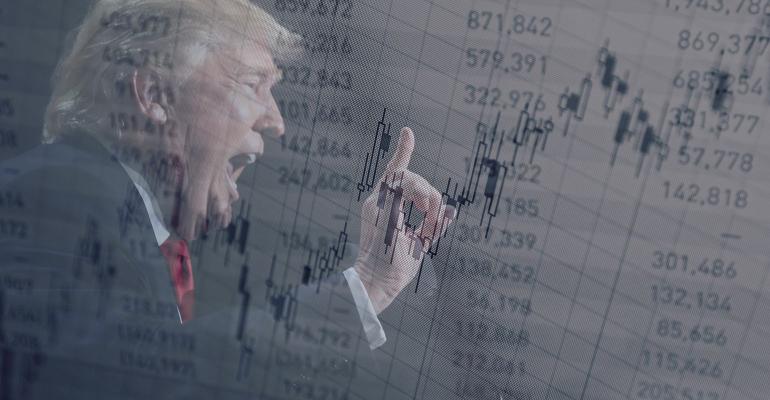By Heather Kennedy Miner
We think today’s low equity volatility environment is unlikely to last, given the elevated political uncertainty around U.S. President Donald Trump’s policies, populism in Europe and related risks. We continue to expect moderately positive 2017 U.S. equity returns, but the journey could be a turbulent one. Here are four reasons we think investors should be ready to stomach greater market volatility in 2017.
We believe the market is mispricing political risk. Rising equities would seem to suggest that anticipation of pro-growth Trump administration policies have overpowered markets’ typical distaste for uncertainty—perhaps for the moment. Pricing the market impact of the populist currents ascendant in the U.S. and Europe is a long game which could take months or years. The potential for protectionist U.S. trade policies vis-a-vis major U.S. trade partners is just one of the politically induced catalysts for volatility that markets face today (upcoming elections in France, Germany and Italy are three more).

More rapid equity market corrections and recoveries. Even before Trump’s surprise election victory, U.S. equities were staging more rapid declines and recoveries than the period before the global financial crisis. Prior to 2008, the S&P 500 Index would take on average 37 days to correct by 5-10 percent. Since the crisis, the same figure was 29 days (as of right before the U.S. election). In a similar way, recoveries are happening more quickly, taking an average of 30 days (versus 48 before). We think markets today are more prone to these rapid corrections and recoveries than in the past. What’s more, equity market volatility in the past has arrived in multi-year clusters (Exhibit 1). We think investors today may be facing a new cluster of volatility, which in our view would elevate the importance of risk management and diversification.
U.S. equity valuations are unforgiving. Elevated equity valuations can persist for some time, but we think today’s high S&P 500 Index valuations may reduce investors’ margin of error. Long-term investment returns (on a 10-year horizon) in high-valuation environments such as today's have been historically positive, albeit low—often in the mid-single digits. This means it has not taken a large market move to erase an entire year’s return potential. We expect equity returns to reflect earnings growth over the medium term.
Conditions remain supportive for risk, though risk management is key. The global economic expansion is halfway through its eighth year, providing a supportive backdrop for equities. The Trump administration’s plans for deregulation and tax reform in our view could help unleash confidence and a greater willingness to invest. This in turn could result in increased differentiation across sectors and individual companies. We think approaches that go beyond “beta” or broad market exposure are worth the consideration of investors who seek to blunt the effects of market volatility.
Heather Kennedy Miner is the Global head, Strategic Advisory Solutions for Goldman Sachs Asset Management





